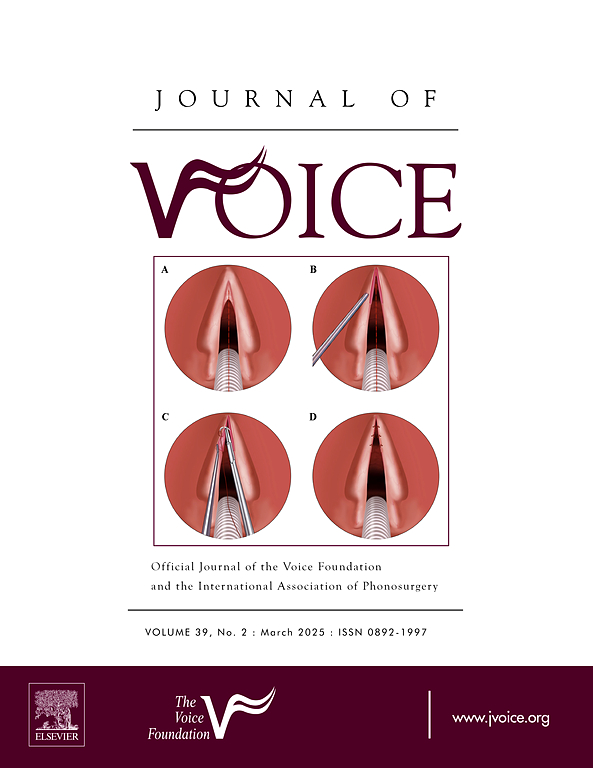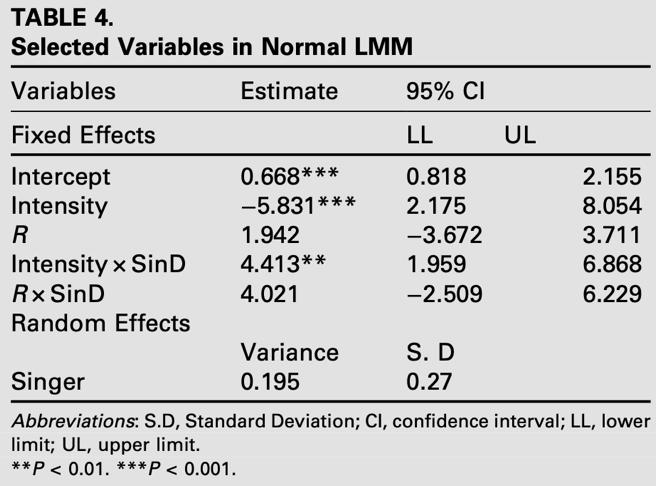Recently, faculty member Su Qin's research team from the Music Department of the School of Arts at Chongqing University published an academic paper titled "Adopted Singing Voice Evaluation Models for Work Efficiency in the Recording Industry" in the international core journal Journal of Voice (SCI Q1, JCR category). As a top-tier journal in the field of voice and vocal science, Journal of Voice has long focused on research in vocal medicine, technology, and voice education. Dr. Huang Xuejie, an outstanding alumna of the Music Department, served as the corresponding author of the paper, with Su Qin as the first author. The study received funding from the Chongqing University Education Development Foundation Project.

The research explores the intersection of artificial intelligence and vocal science, proposing a singing evaluation model constructed using voice information dimensions. This offers an innovative solution for optimizing workflows in the music industry. Within the current music discipline system and vocal pedagogy framework, talent trained by music education institutions meets the basic vocal demands of the music market. However, the music industry still faces a gap in teaching methodologies for achieving efficient vocal workflows. Industrialized precision and efficiency in singing require quantifiable vocal parameters, yet no comprehensive quantitative model currently exists to guide vocal screening. Focusing on vocal efficiency challenges in the recording industry, the research by Su Qin and Dr. Huang Xuejie's team quantified acoustic singing analysis and established an efficiency-oriented singing voice screening model. The team extracted dry vocal recordings, segmented the sampled audio, and used voice analysis software such as Praat to extract parameters for each Singing Duration, including Pitch Deviation, Rhythm Consistency, Intensity, Vibrato Extent, Voice Quality, Dynamic Range, and Rework times.


Linear regression analysis revealed that Intensity is the most influential variable in predicting Rework times (β = −0.410, P < 0.001). Higher Intensity values correlate with fewer Rework times, indicating greater singing efficiency. This finding underscores the importance of vocal intensity in predicting singing efficiency. Subsequent validation of interaction effects showed a significant interaction between vocal intensity and Singing Duration, collectively influencing singing efficiency. Comparing the Normal Linear Mixed Model (LMM) and the Simple Linear Regression Model (SLRM) using the Akaike Information Criterion (AIC) strategy, the LMM demonstrated superior goodness of fit. By integrating theories of vocal production with respiratory patterns during singing durations, the research team posited that vocal practitioners, through high-pitch exercises, are essentially training vocal intensity and density. This provides singers and educators with a quantitative approach to understanding vocal performance, applicable in singing scoring systems, AI efficiency prediction, and human-machine collaborative evaluation mechanisms.
This research achievement exemplifies the interdisciplinary "Art + Technology" collaboration, marking a significant breakthrough for the Music Department faculty in vocal science research and highlighting the School of Arts' internationally forward-looking vision in cross-disciplinary development.



